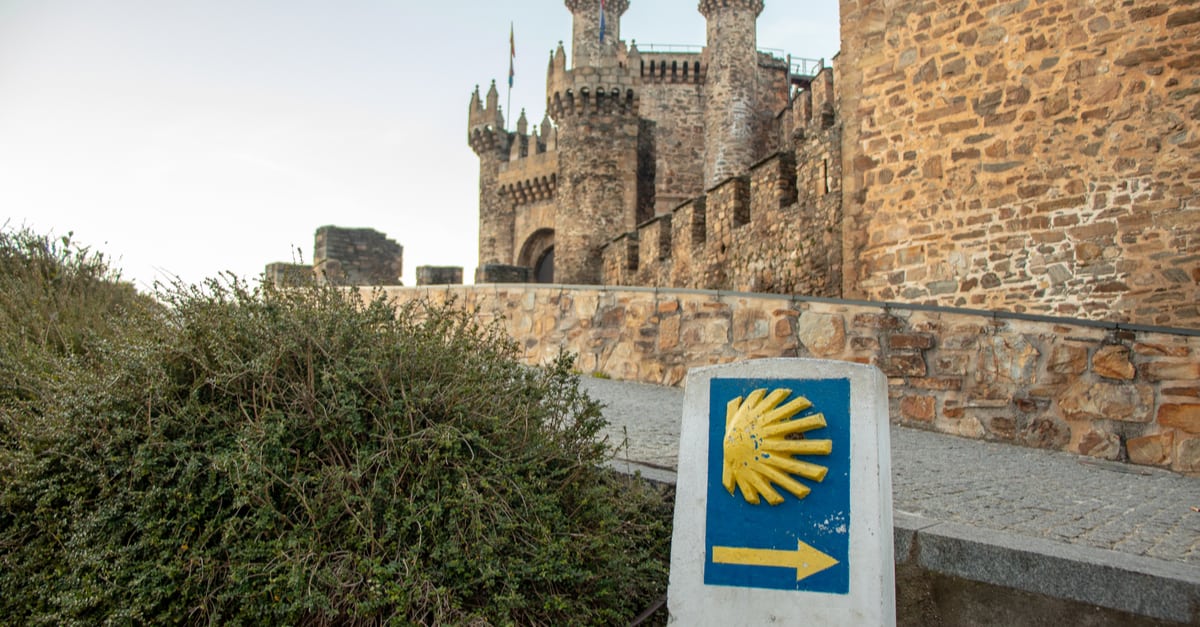Ponferrada holds a special place in my heart. One year I left the Camino de Santiago at this point and on another year I walked with someone very special to me from here to Santiago, and we have continued to walk through life together.
The Camino de Santiago only clips the edge of Ponferrada. So wherever you stay the night before (great albergue in Ponferrada) it is worth stopping here for breakfast or lunch. Visit the old square, it is only a few minutes walk off the route. Also, it is a good idea to get some money here as there was no bank machine for a few days afterwards.
Ponferrada is a town in Spain, the capital of the council (comarca) of El Bierzo, in the province of León. It is situated on the river Sil, a tributary of the Miño, 42º32’40 N, 2º54’10 W, at 544m (1785 ft) above sea-level.
Economy
During the second half of the 20th century, its economy was based mostly on coal mining, but in the 1980s, many mines were closed, and Ponferrada’s economy is now based on tourism, agriculture (especially the cultivation of fruit), wind power generation and mining. Ponferrada is on the Way of St. James (a pilgrimage route that goes to Santiago, Galicia), which attracts many tourists to the city: tourism has thus become another important sector of the local economy.
History and Monuments
The Roman town was named Interamnium Flavium from its position at the confluence of the Sil and the Boeza rivers — inter amnes is Latin for “between rivers”. The modern name derives from the iron reinforcements added to the main bridge over the Sil [latin “pons” and “ferrata”]. The city is noted for its Templar castle, which covers approximately 16,000 square meters. The Templars were only able to enjoy the use of their fortress for about twenty years before the order was disbanded. For a time many of the blocks that at one point formed the walls of the castle were removed for use in the streets. Restoration of the castle is ongoing. Ponferrada also has several attractive medieval churches. Many of the municipal buildings and churches are topped with local blue slate.
In 1178, Fernando II of Spain donated the city to the Templar order for protecting the pilgrims who passed through El Bierzo in their road to Santiago de Compostela. After the extinction of the order in 1311, several noble houses tried to get the city and the castle for their own. Alfonso XI donated the castle to the dominion of the Count of Lemos in 1340, but The Catholic Monarchs incorporated the city into the crown in 1486.
Tourism and Daily Life
Ponferrada hosts the annual festival of La Encina in early September. The city’s football team, Ponferradina, competes in the Division 3 of the Spanish Soccer Federation. This season 2004/2005 the football team seems to be performing well, and might well be in second division next year!
Note. At the end of the season 2004/2005, the soccer team lost during the play-offs the chance of ascending to second division.
Ponferrada and El Bierzo itself is surrounded by mountains. Just 20 Km. away from Ponferrada, you can find Morredero peak, which is 2135 m. high, and it has a little ski station. A few kilometres around from the city, there are many beautiful places and villages (Molinaseca, San Pedro de Montes, Peñalba, Compludo, etc.) suitable for trekking routes and rural tourism.

I love hiking, backpacking, and camping. From the Camino de Santiago to the West Highland Way in Scotland or simply a great day hike on the weekend. Hiking refreshes me, my mind, and keeps my body reasonably fit. So far I have walked three Camino routes and many other long distance hikes in the UK, Canada, and around the rest of Europe. One of the best was my hike up Ben Nevis.

